Environmental labeling comparative guide
There is an excess of labeling and environmental symbols in the market and as consumers, we sometimes have trouble understanding and interpreting this information reflected on product containers and data sheets.
This section aims to provide objective technical criteria that will serve as a guide for you to understand the environmental legislation currently in force, reflected in the market in the form of stamps and certificates. Below, we have provided a comparative table of the different types of label and their main differences:
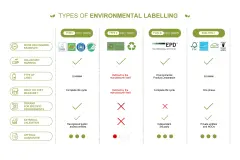
-
LABEL TYPE I: ECOLABELS
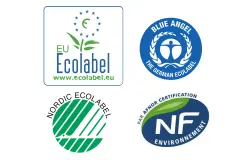
This type of label shows that a product or service complies with certain predefined environmental requirements, agreed upon by recognized entities and available to the public.
Main characteristics:
- Governed by standard ISO 14024
- They measure the whole life cycle of the product or service: design, manufacturing, distribution, use, and final disposal.
- They are verified and certified by external entities.
- They require compliance with all the requirements to obtain the certificate.
- They only certify the "best in class". The 10% of products that are the most environmentally-friendly.
- High level of credibility
-
LABEL TYPE II: ENVIRONMENTAL SELF-DECLARATION
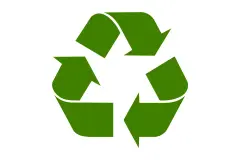
These are labels created by manufacturers. Manufacturers define their own environmental criteria, compliance with which is shown in the form of symbols or graphs.
Main characteristics:
- They measure any type of environmental data the manufacturer wants to show.
- They do not establish minimum criteria to comply with.
- They are verified and certified by the manufacturer itself.
- Variable credibility level.
- A lot of ecolabels are just advertising statements that lack any real basis.
-
LABEL TYPE III: ENVIRONMENTAL PRODUCT DECLARATION
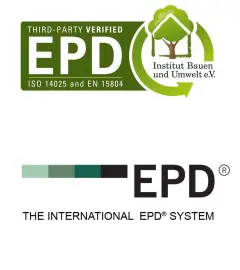
Environmental declarations offer quantified information on a product's impact on the environment, through an analysis of its complete life cycle.
Main characteristics:
- Governed by standard ISO 14025
- They analyze the product's life cycle (LCA), from the moment the raw materials are extracted to the end of its useful life.
- They are based on product category rules called PCRs, which serve as a technical standard.
- They do not establish minimum criteria to comply with.
- They are verified and certified by external entities.
- The certificates may be registered with official bodies such as Envírondec or the IBU (Institut Bauen und Umwelt e.V).
- High level of credibility
- The building sustainability certification systems (LEED, BREEAM, WELL, etc.) are assessing the presence of products verified with EPDs.
-
LABEL SUB-TYPE I: ECOLABELS
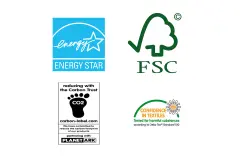
Labels that show that a product or service complies with certain predefined environmental requirements, agreed upon by private entities and NGOs.
Main characteristics:
- Not governed by any regulation.
- They do not analyze the whole life cycle, just a specific phase. They focus solely on one characteristic of the product.
- They are verified and certified by external entities.
- They require compliance with all the requirements to obtain the certificate.
- Their goal is to reach a large number of products, which results in environmental improvement at the sector level.
- High level of credibility